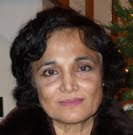I have added a new tutorial on Fourier transform. I have taken a different approach than what I had previously. I think it is still tilted towards making the concept simpler so it tends to dwell less on on typical textbook items such as convergence conditions and properties. Most of you reading my tutorials already have formal education in this area so I am concentrating only on making the ideas clear and hopefully more intuitive.
I recently came across a textbook, "Continuous and Discrete Time signals and Systems" by Mrinal Mandal and Amir Asif. Dr. Mandal is a professor at University of Alberta, Edmonton Canada and Dr. Asif is a professor at York University in Toronto. This is an excellent book. The balance is more on theory as it should be for a textbook but it does a superb job of making the theory crystal clear with unambiguous use of variables and terms, repeating these as needed and keeping obfuscation at bay. The authors go over examples in great detail with graphs (which are beautiful by the way. I am always struggling with graphs in my write-ups.), explaining the smallest steps in the working of examples and trying to make the material comprehensible from both the practical and didactic viewpoint. It covers a very large range of topics, Laplace transforms, Z transform, filter design and as such it is a large book. However all expositions are very well done and will add to intuitive understanding of this topic. If you are working in DSP and need to refer to the basics, then this would be a really good book to have on your shelf. Otherwise for any professors reading this, I suggest that you seriously consider this as a textbook for your Signals and Systems class.
Here is the link to the book on Amazon.
Charan Langton
www.complextoreal.com
